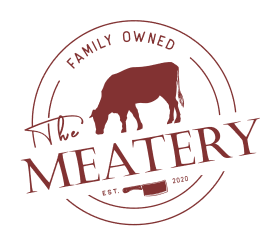When it comes to A5 wagyu, skepticism often stems from its almost mythical status in the culinary world. Many food enthusiasts question whether any beef could justify prices that regularly exceed $200 per pound. This skepticism isn't entirely unfounded, as the market has seen its share of misrepresented products and false claims.
The primary source of doubt typically centers around three main areas:
- Authenticity concerns regarding true Japanese A5 wagyu versus crossbreeds
- Questions about whether the intense marbling is "too much"
- Debates over whether the eating experience justifies the premium price
However, what many skeptics don't realize is that A5 wagyu represents the pinnacle of Japanese beef production, backed by strict regulations and centuries of selective breeding. The Japanese Meat Grading Association (JMGA) employs rigorous standards that evaluate multiple factors beyond just marbling, including meat color, fat color, firmness, texture, and overall quality.
Legitimate concerns about A5 wagyu often come from those who have experienced inferior products marketed as genuine. This has led to increased scrutiny within the industry and stronger authentication measures to protect both consumers and the reputation of authentic A5 wagyu beef.
Price Justification And Grading System
The exceptional price of A5 wagyu is justified through Japan's sophisticated grading system, which is arguably the most stringent in the world. The "A" in A5 wagyu refers to the yield grade, while the "5" indicates the highest possible quality grade on a scale from 1 to 5.
The grading criteria include:
- Marbling score (BMS): Rated on a scale of 3-12
- Meat color and brightness
- Fat color, quality, and luster
- Firmness and texture of meat
- Overall quality of fat
To achieve an A5 rating, beef must score exceptionally well across all criteria, with a minimum BMS of 8. The production costs contributing to these high prices include:
- Specialized feed programs lasting 600+ days
- Intensive care and monitoring of each animal
- Limited production capacity
- Strict regulatory compliance
Is A7 Wagyu a thing?
A common misconception in the wagyu world is the existence of A7 wagyu. This is a myth - there is no such thing as A7 wagyu. The Japanese grading system maxes out at A5, making this the highest possible grade for authentic Japanese wagyu beef.
The confusion often arises from several sources:
- Misunderstanding of the grading system
- Marketing tactics by unscrupulous sellers
- Confusion with other numbering systems
- Social media misinformation
Understanding the legitimate grading system is crucial for consumers. The Japanese meat grading system uses:
- Yield grades: A, B, C
- Quality grades: 1, 2, 3, 4, 5
Check out any of The Meatery's blogs for further tips, tricks, and tidbits of information
Sourcing And Traceability
A5 wagyu's traceability system is one of the most sophisticated in the food industry. Every authentic A5 wagyu cut can be traced back to its origin through a comprehensive documentation system that includes:
- Individual cattle identification numbers
- Birth certificates
- Feed records
- Processing facility documentation
- Export certificates
Each animal's lineage is meticulously documented through a nose print system (similar to human fingerprints) and DNA testing. This level of traceability ensures that when consumers purchase A5 wagyu, they're getting genuine Japanese beef from approved prefectures.
Authorized exporters must comply with strict regulations, and each shipment of A5 wagyu comes with certificates of authenticity that can be verified through Japanese government databases.
Comparisons With Other Wagyu
When comparing A5 wagyu with other grades and types of wagyu, several key distinctions become apparent. The primary comparisons typically involve:
- Australian wagyu (typically MB 9+)
- American wagyu crosses
- Lower-grade Japanese wagyu (A3, A4)
A5 wagyu stands apart through its:
- Superior marbling distribution
- Unique fat composition with higher percentages of oleic acid
- More refined texture and mouthfeel
- Lower melting point of fat
While other wagyu varieties offer excellent eating experiences, A5 remains the benchmark against which all other beef is measured.
What grade is American Wagyu?
American wagyu follows a different grading system than Japanese A5 wagyu. The USDA grading system applies to American wagyu, with most falling into the following categories:
- USDA Prime Plus
- USDA Prime
- BMS equivalent scores of 4-7
American wagyu typically results from crossing Japanese wagyu bulls with high-quality American breeds, most commonly:
- Angus cattle
- Holstein cattle
While American wagyu can achieve impressive marbling levels, it generally doesn't reach the intense marbling characteristics of Japanese A5 wagyu. The American grading system focuses on different criteria, making direct comparisons challenging.
What does a 9+ Wagyu mean?
A 9+ wagyu rating typically refers to the Australian grading system, which differs from the Japanese A5 system. The Australian Marble Score (MS) ranges from 0 to 9+, with 9+ being the highest possible score.
Key points about the 9+ rating:
- Represents extreme levels of marbling
- Approximately equivalent to a Japanese BMS of 7-8
- Still generally below A5 wagyu standards
- Commonly seen in premium Australian wagyu
Understanding these different grading systems helps you make informed decisions when purchasing premium beef. While a 9+ score indicates exceptional quality in the Australian system, it's important to note that it uses different criteria than the Japanese A5 grading system. Check out TheMeatery.com to get all types of wagyu sent straight to your door!









